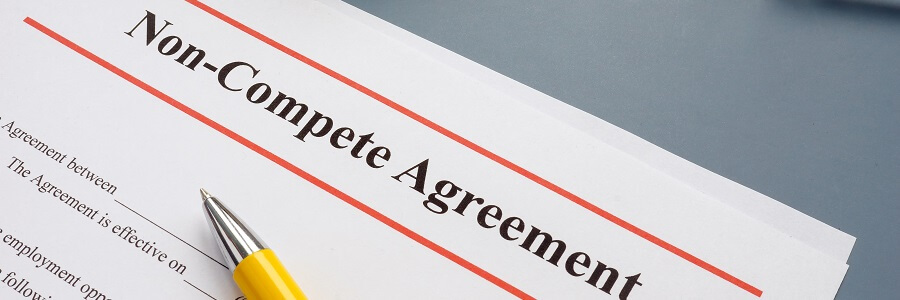How to Create an Employee Handbook: 7 Key Components

Quick look: A thorough, regularly updated employee handbook can provide clarity to staff, reiterate the company’s culture and values, and protect the organization during conflict. Here are seven key items to include in your employee handbook, and how a professional employer organization (PEO) can help small businesses create and maintain this essential document.
While no law requires organizations to have an employee handbook, maintaining an up-to-date copy is critical to a business’s success.
Developing an employee handbook is a strategic way to communicate your company culture, establish expectations, consistently apply organizational policies, and reduce the risk of conflicts. Yet, many business leaders find the task of creating and updating their handbooks challenging, often due to time constraints or uncertainty about what critical information to include.
What to include in an employee handbook: 7 must-have topics
Ideally, your employee handbook should be a living, breathing file that’s regularly updated to reflect the latest changes to your organization’s policies, programs, procedures, and guiding principles. From fundamentals like your company’s mission statement and hours of operation to differentiating perks like paid time off (PTO) policies and benefits plans, here are seven key focus areas to include in your business’s employee handbook.
1. Company missions and values
Your company’s mission and value statements should be front and center within your employee handbook. A mission statement explains your organization’s purpose and intention, while a value statement provides a moral compass for the business by describing the fundamental principles that guide and direct the company.
Including these statements in your employee handbook helps shape your organizational culture and can influence your business’s employee value proposition.
2. Company policies
A major function of employee handbooks is to outline various company policies, including but not limited to:
- Code of conduct
- Employment classification information (full-time, part-time, temporary), job descriptions, and employee records
- Dress code
- Hours of operation
- Communications, technology, and social media policies
- Remote and hybrid work policies
- Zero-tolerance policies regarding workplace violence and harassment
- Wage and salary details, including pay schedules, timekeeping, overtime policies, and any performance-based pay or bonuses
- Drug and alcohol usage policies
- Data and customer privacy policies, including guidelines on handling confidential company information, customer data, and adherence to privacy laws
- Workplace safety laws and regulations and information on how to report accidents and safety concerns
- Rules regarding accepting gifts
- Conflict of interest policies
- Protocols for resignations, terminations, and layoffs
- Disciplinary procedures for policy violations, including potential consequences
- Promotion and performance evaluation policies
3. Employment legislation
An employee handbook is the ideal place to outline your organization’s adherence to various employment legislation, including:
- The Family and Medical Leave Act (FMLA) overview
- Equal Employment Opportunity (EEO) policy statement
- Non-discrimination policy
- Reasonable accommodation policy
4. Employee benefits information
Employee benefits include more than just medical coverage and retirement savings plans. Your employee handbook is a helpful place to outline both hard and soft benefit offerings, like:
- Vacation and PTO policies
- Leave policies (including sick leave, maternity/paternity leave, family leave, bereavement leave, and more)
- Employee benefits plans, including supplemental coverage
- Training benefits, like tuition reimbursement and student loan repayment policies
- Soft benefits, including Summer Fridays, free lunch/snacks, etc.
5. Grievance processes
Grievance procedures outline how workplace disputes should be documented, presented, and resolved. These guidelines help ensure complaints are handled promptly, appropriately, and consistently.
Communicating these protocols also helps organizations avoid potential compliance issues and encourages workers to come forward if they should experience a problem.
6. Employee onboarding information
An employee handbook is often one of the first documents new hires can review, and it can make sense to include onboarding information in it.
Business leaders can consider including onboarding steps, a list of required documents for new hires, and performance expectations within a certain timeframe upon hire.
7. Employee acknowledgment and contact information
A crucial step for employers in managing employee handbooks is to ensure staff formally acknowledge they have read, understood, and agree to adhere to the document. This official acknowledgment, secured through their signature, is vital for keeping on record in the event of any disputes or legal challenges. It’s advisable to keep two signed copies: one for the employee and another for the employer, ensuring both parties have a reference to the agreed-upon terms.
Additionally, an employee handbook should include details about whom staff can contact if they have questions about any outlined policies or procedures.
How PEOs simplify employee handbook creation and maintenance
Human resources (HR) professionals and business leaders, particularly those at small businesses, often find themselves juggling multiple priorities. As a result, the task of developing and updating employee handbooks can sometimes be overlooked in favor of more pressing projects.
Luckily, the experts at PEOs are well-versed in everything from employment law to benefits plans and can help small- and medium-sized businesses (SMBs) create, maintain, and distribute employee handbooks. For example, ExtensisHR:
- Assists in developing various policies such as anti-discrimination policies, health and safety protocols, and grievance procedures (they also help keep these policies updated in response to changes in laws or business operations).
- Provides ongoing support, answering any questions and helping to address situations that arise related to the employee handbook or HR policies in general.
- Guides SMBs as they update and scale their handbooks to fit their organizations’ changing size and complexity.
Additionally, ExtensisHR’s dedicated, SHRM-Certified HR Managers understand your company’s goals and provide personalized guidance. While some PEOs have standard templates and policies, ExtensisHR works with clients to tailor their employee handbooks to their specific needs, cultures, and business practices, including aligning the handbook with the company’s mission, values, and industry-specific regulations.
ExtensisHR’s risk and compliance team also offers an Employer Protection Program, risk management and workplace safety guidance, and more, helping reduce the risk of legal issues related to employment practices.
Employee handbooks play an important role in business success, from instilling the company culture among staff to helping organizations maintain clarity during conflict.
Could your organization use some help creating an employee handbook (or updating an existing one)? We’re here to help—contact the experts at ExtensisHR today.



